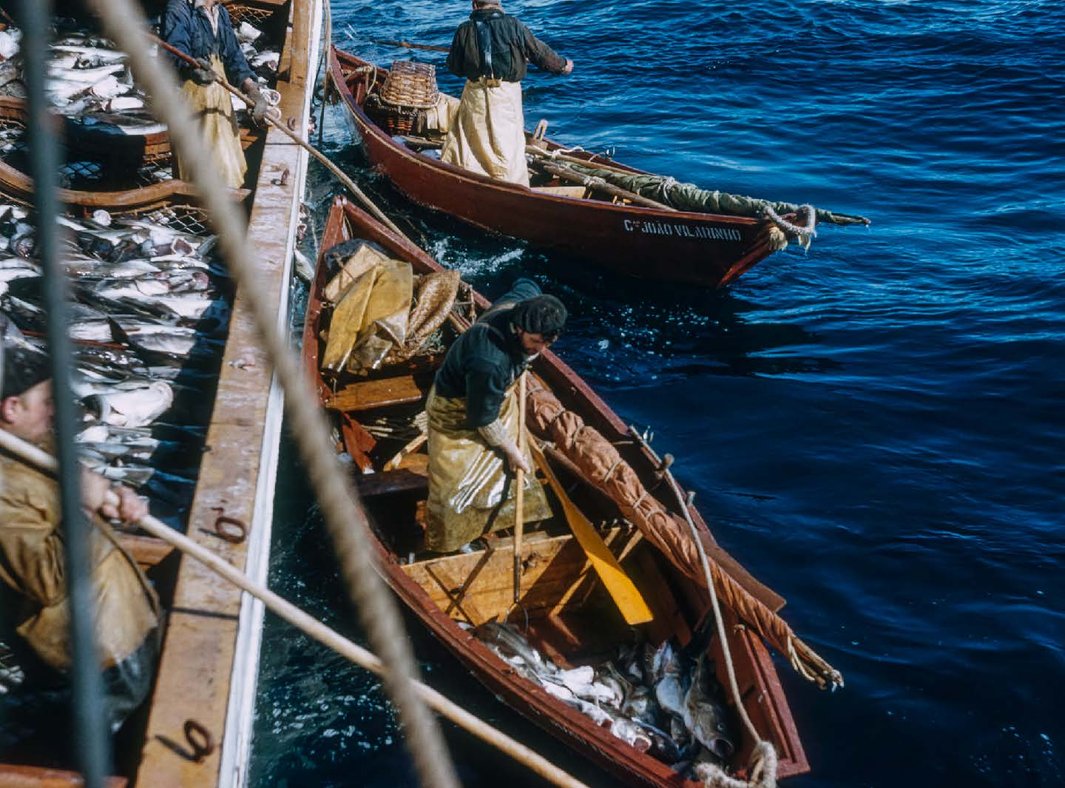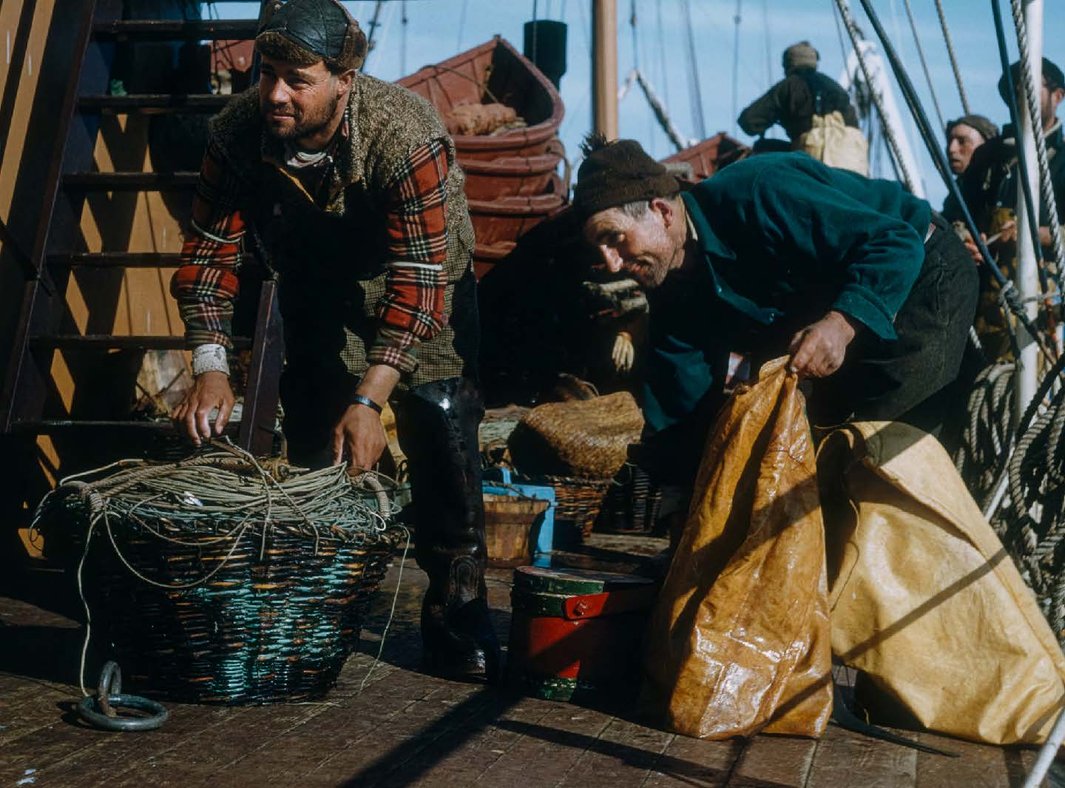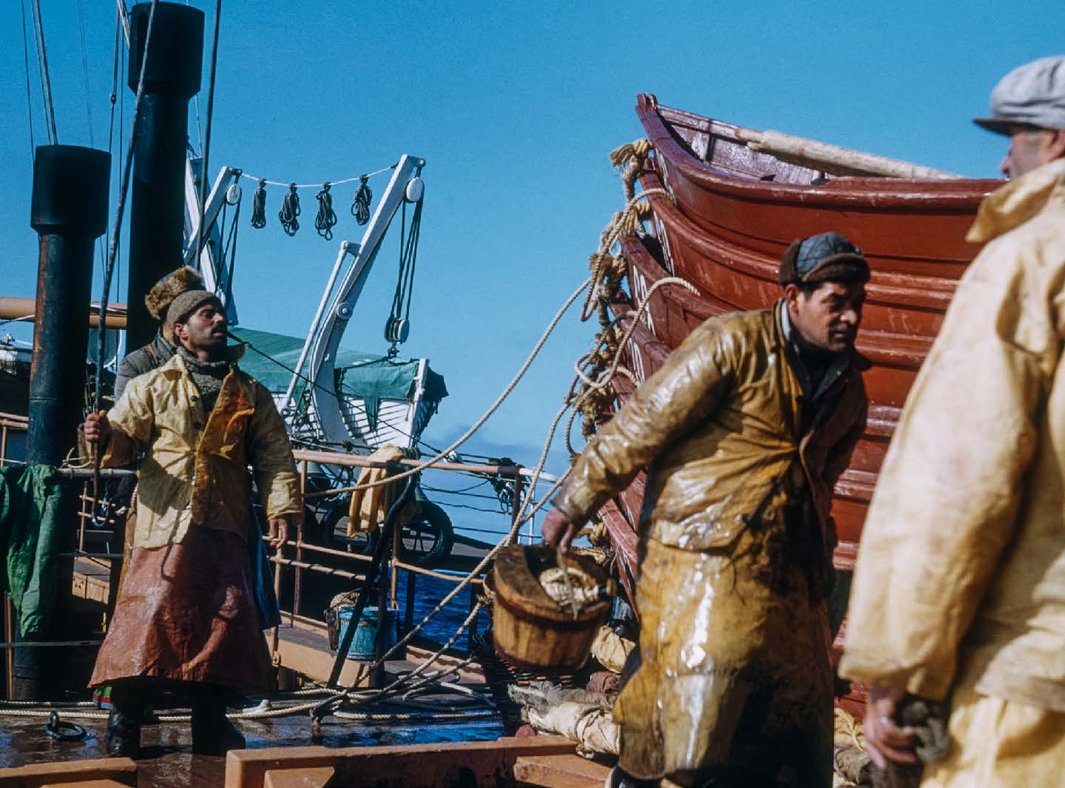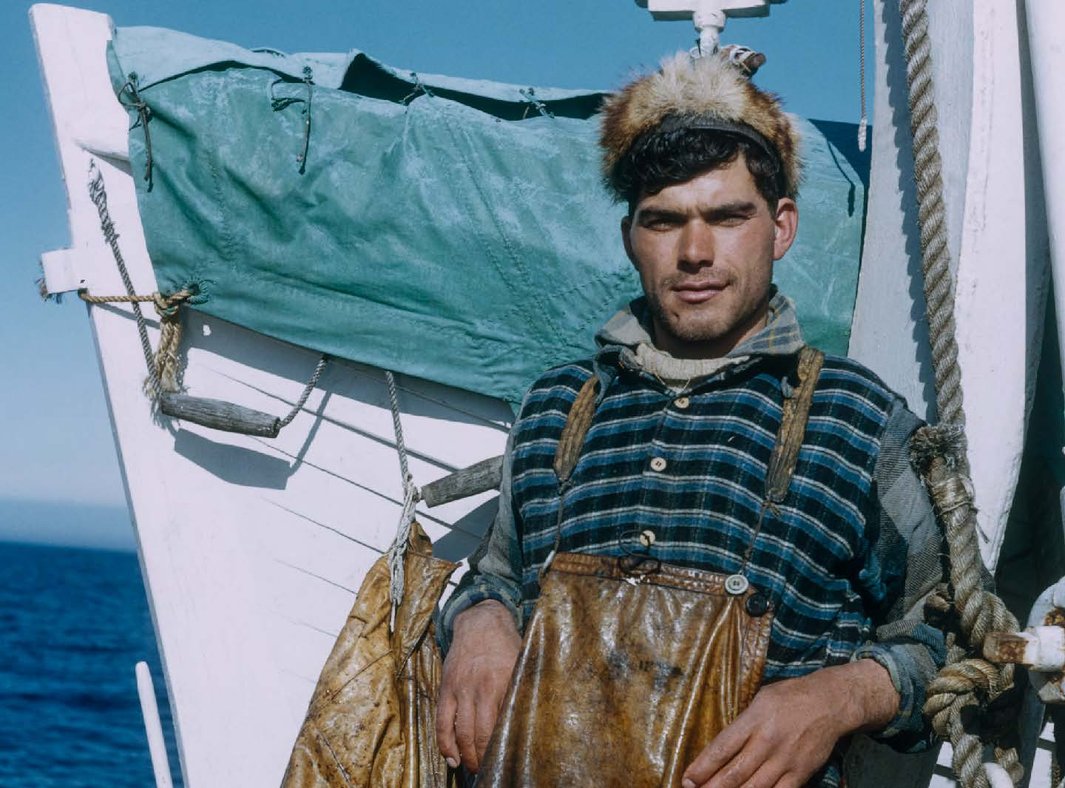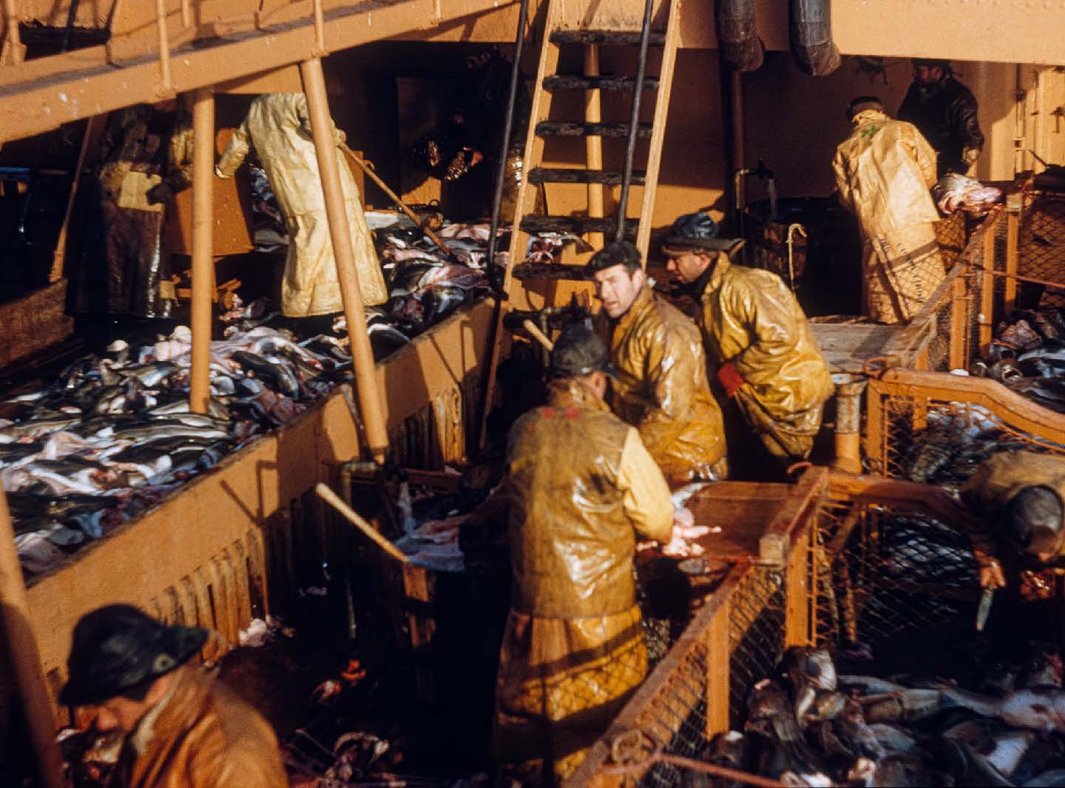The Faithful Friend
FÁTIMA MOURA
Words
MÁRIO RUIVO
Photography
The true symbol of Portuguese identity is not the poet Camões, nor football, nor fado but none other than the humble cod (bacalhau). And it’s not unusual for those Portuguese abroad to miss their own family less than their favourite cod dishes, with 1,001 different recipes to choose from. The fish is also a big favourite for Christmas dinner, for rich and poor alike.
It seems odd that Portugal, a country with one of Europe’s largest exclusive economic zones and the world’s finest fish, chose salted and dried cod as its national dish and the basis of many traditional recipes. Álvaro Garrido, a specialist in the history of cod, calls it "irrational consumption". I would call it an emotional bond, embodied in the affectionate epithet "loyal friend", having satiated centuries of hunger for mere pennies.
The world’s third largest consumer of fish, each Portuguese eats, on average, 55 kg/year, including 20 kg of imported, fresh-weight Atlantic cod. There are many reasons cod is ideal for preservation: lean but succulent due to high levels of collagen; adapts easily to environmental conditions with an antifreeze protein to survive glacial seas and genes that will help it deal with global warming; has existed in large quantities and recovers relatively easily from overfishing.
All these factors made cod popular with various European peoples. One of the first was the Vikings, who introduced the Portuguese to the dried version they brought in their longships when they raided southern coasts for salt and slaves. Later, when relations were more civilised and commercial, Póvoa de Varzim became a Nordic trading post. Even today, Norwegians eat lutefisk (dried cod soaked in water with caustic soda) at Christmas. Cod and whales were also key to the Basques’ livelihood, who caught them on the Grand Banks of Newfoundland, where the cold Labrador current meets the warm Gulf Stream. The Spanish (especially Galicians and Basques), French and Southern Italians also have iconic cod dishes, such as pilpil, brandade and baccalà frita romana. Even so, the fish was never sacred like it has been in Portugal.
When the Portuguese went fishing
Despite Portugal’s extensive coastline, the logistics of supplying fresh fish to inland regions have always been problematic. With over 160 days of compulsory fasting that prohibited meat consumption, demand for fish was very high. Convents and monasteries had priority when it came to buying fresh fish, while ordinary folk had to settle for canned sardines and salted and dried cod.
Despite widespread consumption in the country, the Portuguese only caught cod themselves during three historical periods. The first was in the 16th century, during the reign of King Manuel I, when the fleets brought it from Newfoundland, where large colonies of fishermen from Aveiro and Minho worked the waters in summer. At that time, there were various countries catching cod in huge quantities in the Canadian provinces of Newfoundland, Labrador and Nova Scotia. Prime cuts went to Europe, scrag ends to the Caribbean, particularly Jamaica, to feed plantation slaves and prop up colonial fortunes. It was never a staple food in African colonies, but was important in Brazil, where it remains a favourite. This fishing ended when the English destroyed the Portuguese ships that were part of the famous Armada.
The second period began in the mid-18th century, due to a major crisis in sardine fishing, which was a staple food at the time. From 1835, with the change in legislation affecting Atlantic cod, private investment in fishing fleets became profitable and cod became the population’s staple by the end of that century. This change in diet was essentially for the poor, as demonstrated by the total absence of cod recipes in the cookbooks of the time, which were written for the better off. A century later, in a book written by the royal cook Lucas Rigaud, there were still more recipes for turtle than for cod.
The third phase of cod fishing began in the 1930s. It was undertaken by the Estado Novo regime with a large domestic fleet of fishing vessels, designed to create internal supply and make imports unnecessary. Cheap once again, cod then became part of workers' lunchboxes. However, the fleet remained artisanal, was never modernised and consequently became uncompetitive. The tough annual cod fishing expeditions were epic, normally lasting six months.
The fleet included a lugger, which was a large boat where the men lived and the fish was salted and stored. The cod was line caught in small sailing vessels and rowing boats (dories), which were only big enough for one man. These boats would situate themselves up to a couple of miles away from the lugger, and would only return when they were fully loaded, many hours later. In the 1970s, the Estado Novo tried to substitute cod for frozen fish, initially encountering some resistance from the public. Along the way, cod permeated Portuguese society and became an iconic Christmas dish.
Mário Ruivo
Used in an unusual but complementary way, the photographs illustrating Fátima Moura’s gastronomic text were taken during a mission headed by Mário Ruivo (1927-2017), who was part of the Portuguese research team working in the field of cod biology.
Between 1954 and 1961, Ruivo led a team that honoured commitments made to the ex-International Commission for the Northwest Atlantic (ICNAF), now the Northwest Atlantic Fisheries Organization (NAFO), which monitored commercial fish stocks.
Courtesy of the Ílhavo Maritime Museum, these images are interesting for both their artistic value and up-close depictions of key figures. The photos also show a less well-known side of the man, who, in addition to being a distinguished marine scientist, was a citizen committed to defending causes and a pioneer in guarding the oceans and environment in Portugal.
Cod isn’t fish
For the Portuguese, cod isn’t fish, it’s cod, as demonstrated by the fact they drink red rather than white wine with it. As soon as it’s fished from Russian, Icelandic or Norwegian waters, the numerous transformations it undergoes make it a genuinely Portuguese product. That handsome, slippery fish is delicious eaten fresh, although most Portuguese have never eaten it that way. The cod is transfigured until it is finally butterflied, reminiscent of the shoe sole a hungry Charlie Chaplin eats in "The Gold Rush". We can enjoy 1,001 appetising recipes, where any part of the fish can be combined with a variety of ingredients. Cod can be eaten from head to tail, and that includes the cheeks, tongues, roe, liver and even the swim bladders (samos).
Our appropriation of cod initially involves curing it, the Portuguese way. First, it’s separated by weight and category, butterflied, prepared and salted for one to three months. After salting, it is dried, which used to be done in the open air but today takes place in hot air chambers: the longer and less intense the drying process, the better the quality of the end product.
When the salted and dried triangles reach the shops, consumers must have their wits about them. Those buying it this way should avoid badly cured specimens, which often have a pinkish hue. Real cod, the Gadus morhua species, has a straight tail fin, while its second-rate relative, the pollock, has a forked tail fin. To know if it’s well dried, hold it up horizontally and ensure it remains flat. It’s best to have it cut into pieces, which are then separated by height, so that it cooks evenly. If you buy the cod like this, there are still a few stages to come before it gets to the table.
One of these stages is soaking, which removes excess salt and rehydrates the fish. In the past, this was done under running water from a spring or stream. The water should be between 4ºC and 8ºC. In summer, this should be done in the fridge, changing the water several times. Next, the cod pieces should be placed on a net, skin side up. Finally, for those who don't want to risk this step, buy frozen cod, which is pre-soaked and ready to cook.
The final cooking stage means choosing to boil or bake, which involves a specific technique that preserves the collagen. If not properly cooked, the cod becomes dry and stringy. The cooking water should never boil, with the fish preferably finished off the heat, in a covered pan. If you’re not sure it’s done, insert a thermometer in the thickest part of the fish. The ideal temperature is 40ºC.
1,001 ways
Cod recipes are as numerous as the stories Scheherazade told King Shahryār in the legendary Arabian Nights, which makes choosing the right one a tricky proposition. Purists believe that the best way to serve cod is boiled, with potatoes, collard greens and lashings of olive oil, all ingredients that country folk had in their vegetable gardens. However, there is a growing number of people who enjoy French-style dressings, cream, bechamel and mayonnaise. Nowadays, the most popular cod dish in Portugal, and the most suitable for those preparing for more intense dishes, is "à Brás". This dish boasts flakes of cod mixed with creamy egg, which contrasts with the texture of the crunchy potato. Another ideal icon for cod newcomers is the fishcake (pastél de bacalhau), known in the North as "bolinho de bacalhau".
Based on hundreds of years of loyalty, devotion and passion, there is probably no other relationship in the history of world gastronomy as intense as the one between the Portuguese and cod.


